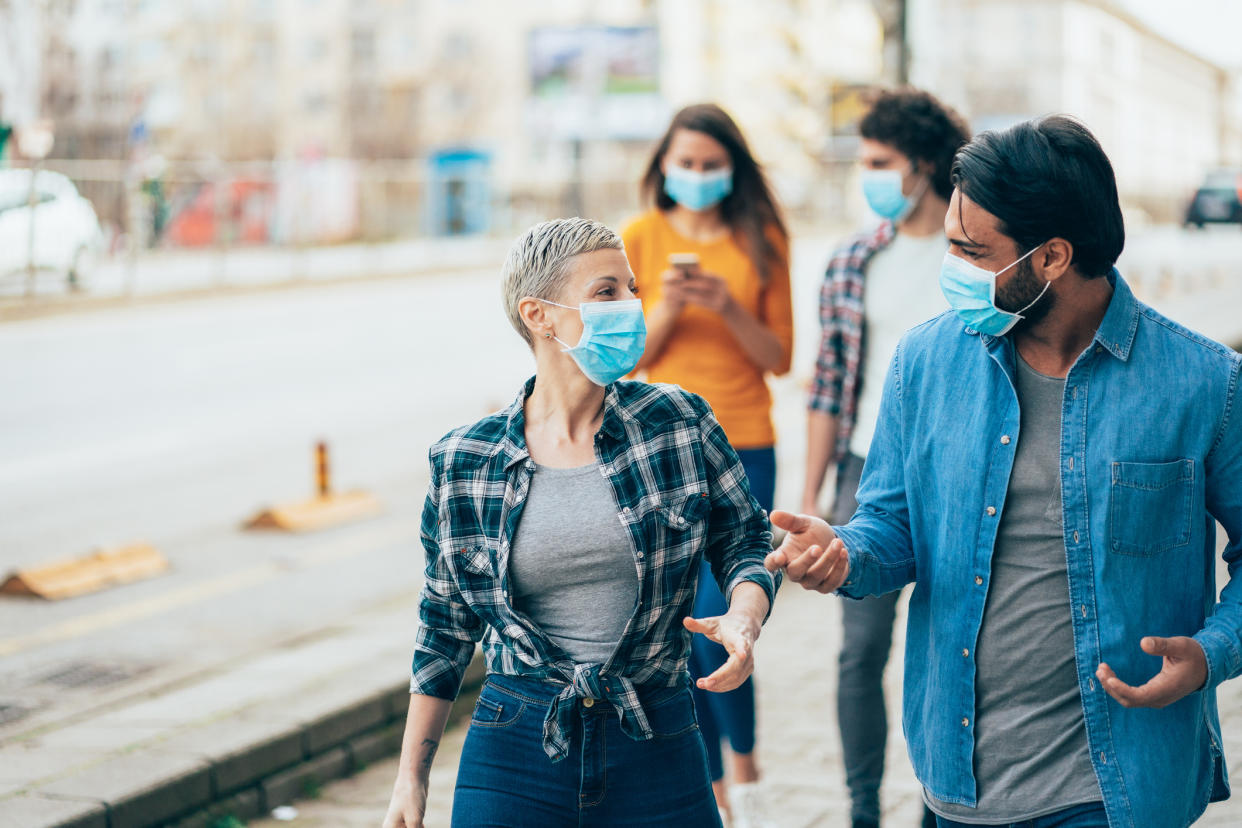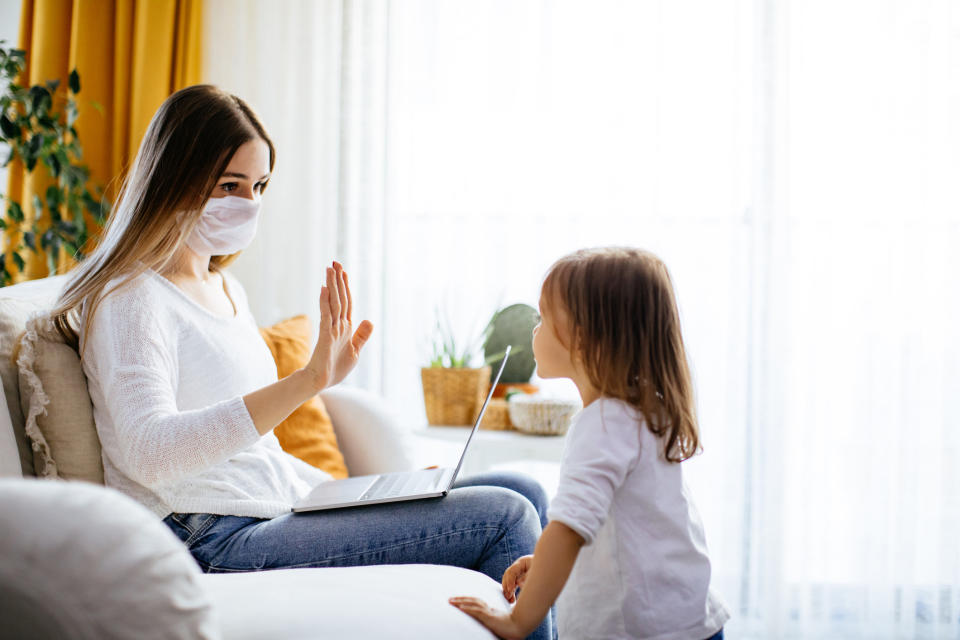How to communicate well while wearing a face mask

As the fight to slow the spread of coronavirus continues, it’s becoming clear that face masks are here to stay, at least for the foreseeable future.
They’re already compulsory on public transport, and from 24 July, people in England will need to wear face masks in shops or face a £100 fine.
But as the evidence suggesting masks can be an important measure in the fight against COVID-19 continues to grow, it’s hard to ignore the impact obscuring part of our face is having on the way we communicate with each other.
For a start, covering most of our face can make it difficult to recognise people we know.
“Generally, people find it easier to recognise other people when we can see their whole face, as then the brain can process the face as a single 'fused' object, rather than having to process all of the different features separately,” says psychologist Dr Rebecca Brewer of the Royal Holloway University of London, who has studied the role of facial expressions in the way we communicate emotion.
“Scientists call this 'holistic face processing' and it really helps us to recognise people quickly and accurately.”
Read more: How to protect skin while wearing a face mask, according to skin experts
Dr Brewer adds: “When someone is wearing a face mask and we can’t see the whole face, we might need to rely on other information to recognise them – but the good news is that there’s lots that we can use instead, like their hairstyle, voice, body shape, posture, and movement.”
Of course not being able to recognise someone is the least of the concerns for the 12 million people in the UK who are deaf or have some form of hearing loss, and for whom face masks obscure the visual cues they may rely on to communicate.
But even if you don’t have hearing loss, many things can be lost in translation if you can’t see the lower half of a person’s face.
Scientific research has highlighted the fact that we use different parts of our face to convey specific emotions, whether that’s by choice or unintentional.
A study by Mehrabian and Wiener in 1967 revealed that 55% of communication is based on facial expressions.
“A lot of information about how someone's feeling comes from their facial expressions, so when we're speaking to someone wearing a face mask we might find it harder to read their emotion,” says Dr Brewer.
When a large part of someone’s face is hidden with a mask or covering, we may have to rely on expressions from the features we can see, like the eyes.
“The eyes can be quite expressive, especially for some emotions,” she says. “We can see creases around someone’s eyes when they’re happy, wide eyes and raised eyebrows when they're shocked or scared, and creases between the eyes when they're angry or confused, for example.”
But some emotions might be harder to recognise, like disgust, which is mostly expressed in the mouth and nose area.
“Again, there are other clues to someone’s emotions that we can use, like the pitch or speed of their voice, and the way they move their body or gesticulate,” Dr Brewer says.
“We might find that we notice or use these other cues more when someone is wearing a face mask to tell how they’re feeling.
“We might also find ourselves slightly exaggerating our own eye movements, body movements and voice when we're wearing a face mask ourselves, so that others can read our emotions more easily.”
Read more: Who is exempt from the new face mask rules?

How to communicate more easily when wearing face masks
To help you recognise someone else’s emotion while they’re wearing a face mask, Dr Brewer recommends using the expression of their eyes, as well as paying a bit more attention than usual to their tone of voice.
She suggests looking for clues about how high or low their voice is, how quickly they’re speaking and how loud their voice is.
“It’s also worth looking at their body movements and the gestures they’re making with their hands,” she adds.
Read more: Coronavirus: How to help children get used to wearing a face mask or covering
To help other people to recognise your own emotions, Dr Brewer says you could slightly exaggerate your eye movements.
“One thing to bear in mind in particular is that other people need to see creased eyes to know that we are smiling under a face mask,” she says.
“This is called a ‘Duchenne smile’ and happens naturally when we are genuinely happy.”
We could also try to use tone of voice and body movements more to communicate our emotion, or simply remember to tell people how we're feeling. The key is not to forget that the person you’re talking to may not pick up on your emotions as easily as they would do, if you weren’t wearing a mask, so go easy on them.



